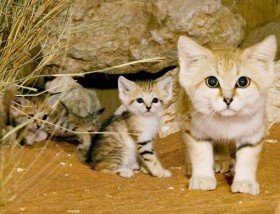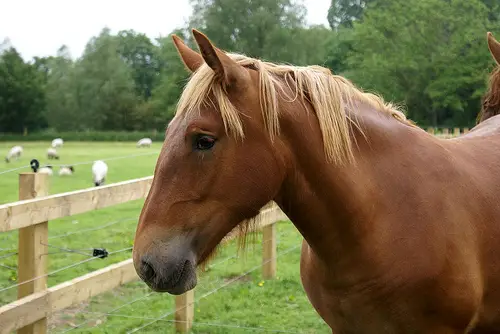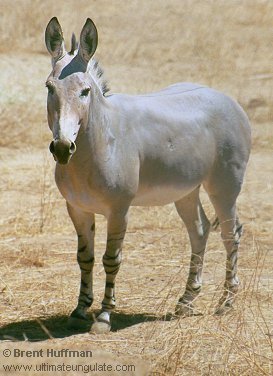Sand Cat
The Sand Cat is a small wild cat, their natural habitat being deserts across Asia and Africa. The Sand Cat can survive in the most extreme temperatures, ranging from −5 °C (23 °F) to 52 °C (126 °F) and they inhabit areas such as the Sahara, which are too hot and dry for most animals.
The cat’s body averages at around 50 cm, while the tail can reach up to 40 cm in length. Their average weight is between 2 and 4 kg. The Sand Cat’s light pale-sandy fur with black bars acts as an excellent camouflage in the sand, making them extremely hard to see. They have large, pointed ears, improving their sense of hearing, enabling them even to hear prey moving under ground level.
The Sand Cat is a solitary animal that spends daytime in a burrow it has dug, to shelter from the desert heat. Unlike many other wild cats (such as the Bobcat), these species don’t guard their territory and may move to a different area at any time. They come out at dusk, when the temperature has cooled off, and look for rodents, lizards, birds and other desert creatures to prey upon. The Sand Cat’s camouflage combined with excellent predatory skills, enable them to obtain all the water they need from eating it’s prey and it doesn’t need to drink at all.
The only time when the Sand Cat meets other individuals is during the mating season. Little is known about their mating habits, as the Sand Cats are hard to track in the wild, but from the individuals held in captivity, it is known that gestation lasts for around 62 days, after which 2-4 kittens are born. They are born fairly undeveloped and are completely dependent on the mother until they are fully weaned.
Natural predators of the Sand Cat include predatory birds, wolves and snakes, although their excellent camouflage most often helps them avoid predators. Also, as they don’t need to drink on a regular basis, predators can’t catch them near water sources. Still, as the Sand Cat is one of the smallest wild cats, it can be considered the most vulnerable to other natural predators.
Sand Cats are hard to be counted and haven’t been observed very much, due to the fact that they don’t have any specific behavior patterns and they move from one territory to another often enough. IUCN lists these wild cats as “Near Threatened” and although it is hard to make any conclusions about the current state of their population, it seems that their population has been declining, judging solely by the fact that they’re less often seen in the deserts.
These wild cats, although not the biggest nor the fiercest, may very well be crowned the toughest as they can live in conditions rarely any other mammal would be able to. The behavior of the Sand Cats is being examined in the few zoos that have managed to capture a few specimen, to find out more about their amazing lifestyle.




